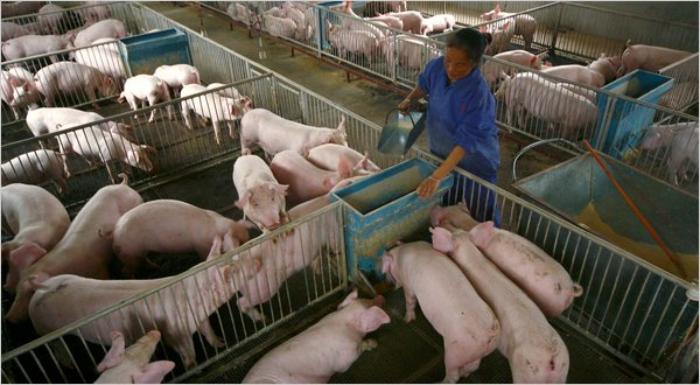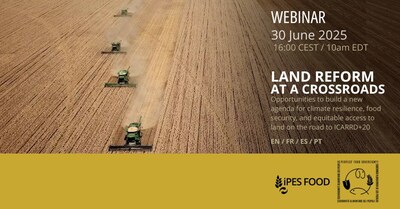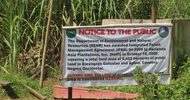
New York Times | September 27, 2010
By SONIA KOLESNIKOV-JESSOP
SINGAPORE — Singapore is eyeing a gigantic farming project in northeast China that could help the small, densely populated city-state diversify its food supplies, while offering export opportunities for its expertise in food safety and investment opportunities for its businesses.
One company, Singapore Food Industries, has already announced a joint venture to set up an integrated pig farm as part of the project. Another, Singbridge International Singapore, is studying the commercial feasibility of a joint venture in developing a giant food production zone jointly with the Jilin municipality.
The China Jilin (Singapore) Modern Agricultural Cooperation Food Zone is an ambitious project covering 1,450 square kilometers, or 560 square miles, twice the area of Singapore. It is envisioned as a major food production center integrating farming with food processing, storage and logistics.
“There are similar large-scale projects now being worked on around the world, but this is a world’s first in terms of joint regional private-public sector partnership,” said Veiverne Yuen, associate director in the Food & Agribusiness Research and Advisory Asia team at Rabobank. Mr. Yuen was project manager of a conceptual feasibility study conducted by Rabobank for the food zone.
In May, the Jilin Provincial People’s Government announced the inauguration of the food zone, which it described as a “major collaborative project” to improve food security and food safety for both Singapore and China.
For a start, the project will explore the feasibility of setting up a disease-free zone for producing pork for export to Singapore, said Goh Shih Yong, spokesman for Agri-Food & Veterinary Authority, or A.V.A., the Singapore food regulator.
Singapore currently imports more than 90 percent of the food it needs to feed its five million residents and the more than nine million tourists who visit every year.
According to A.V.A. data, Singapore imports 96,200 tons of pork a year, mainly from Brazil, Indonesia and Australia. It also relies heavily on Australia for mutton and beef. It is looking to the Chinese venture both to diversify its food supplies and to increase their security.
The pig farm is a joint venture of Singapore Food Industries; the DaChan Food (Asia) Co., based in Hong Kong, one of the largest chicken meat products and feed suppliers in China; and the state-owned Jilin China-Singapore Food Zone Development Construction Investment Co., or J.C.S.
Ground-breaking started this month, and when the farm is completed over the next six years, it is intended to incorporate a supply sequence starting with feed production and breeding and running through slaughtering and meat processing, that could process a million pigs each year.
“Pork is one of the main sources of protein, especially for the majority of the Chinese population in Singapore. The project will leverage on the geographical and resource advantages of Jilin City to secure a safe, reliable and sustainable supply of pork for the Singapore market,” said Poon Choon Liang, chief operating officer of Singapore Food Industries.
“Diversification helps us tackle the food challenges that affect global food supply and demand in the future. It is a key strategy in ensuring a resilient supply as it enables our traders to quickly switch to alternative sources and at the most competitive prices,” he said.
Singapore has always tried to diversify its food sources as part of a strategy to stabilize local food prices.
It intensified those diversification efforts in 2008, establishing new sources for pork in a number of countries, including Poland, Mexico and Spain. It also brought in live fish from Namibia and processed poultry from Turkey, China and other countries.
Mr. Yuen said that the availability of pig feed near the Jilin farm should enable it to produce pork at a lower cost.
More important, the pig farm will be surrounded by a zone free of foot and mouth disease, to be established and monitored by the A.V.A. following guidelines set out by the World Organization for Animal Health.
“The A.V.A. is recognized as one of the world’s top institutions with regards to control of animal health and safety in food manufacturing. That’s because, as a single entity, it can streamline controls, unlike most other countries where these different aspects of food safety are spread across different government organizations,” Mr. Yuen said.
To establish and maintain the disease-free zone, bio-security checkpoints will be set up to ensure that people disinfect their hands, clothes and footwear when entering or leaving farms.
Disease surveillance procedures will also have to be put in place, involving the collection of samples from livestock for testing, to check for contamination by circulating infections, Mr. Ong said.
Under the agreement, the disease-free zone is expected to be established at the end of 2011. The zone is to be officially recognized by the Ministry of Agriculture in China and endorsed by the A.V.A.
Jilin, which lies in the central part of northeast China, bordering Russia to the east and North Korea to the southeast, is one of the world’s most productive corn-growing regions, currently producing 20 percent of the corn grown in China.
Yet the corn-belt region is producing well below its capacity.
“Agronomically, the climatic and the soil characteristics are very similar to what you have in the corn belt in the Midwest in the United States, so it’s very fertile black soil with optimal climatic conditions in terms of temperature and rainfall to grow feed grains,” Mr. Yuen said. “But on the ground, the level of applied technology is still lagging what you have in the developed world, so there is a lot of room to improve.”
Harvests could be substantially raised by building more infrastructure, including irrigation systems; by introducing modern farm management methods; and by using industrialized farm machinery, he said.
“We believe you could actually increase the corn yield in that region by anywhere from 50 to 80 percent.”












